Showing Spotlights 121 - 128 of 556 in category All (newest first):
 Proteins present in human plasma mirror a person's physiology and the ability to rapidly profile the plasma proteome holds the promise of a revolution in point-of-care disease diagnosis and therapeutic monitoring. New research findings suggest that levitation patterns of human plasma proteins using a magnetic levitation technique may provide useful information about the health spectrum of individual donors. The study reveals that optical images of magnetically levitated plasma proteins carry important information about the health spectrum of plasma donors.
Proteins present in human plasma mirror a person's physiology and the ability to rapidly profile the plasma proteome holds the promise of a revolution in point-of-care disease diagnosis and therapeutic monitoring. New research findings suggest that levitation patterns of human plasma proteins using a magnetic levitation technique may provide useful information about the health spectrum of individual donors. The study reveals that optical images of magnetically levitated plasma proteins carry important information about the health spectrum of plasma donors.
Feb 3rd, 2020
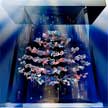 The density of proteins in solution is an important fundamental biophysical quantity that has not been accurately measured yet. This has led to extensive debate in the literature regarding the precise density value of proteins. This rough density metric can often lead to inaccurate estimates on the other physicochemical and composite protein features, especially after their interactions with other materials such as nanoparticles. Researchers have now demonstrated a new technique using superparamagnetic iron oxide nanoparticles for magnetic levitation, which promises a more precisely measurement of the density of proteins in solution.
The density of proteins in solution is an important fundamental biophysical quantity that has not been accurately measured yet. This has led to extensive debate in the literature regarding the precise density value of proteins. This rough density metric can often lead to inaccurate estimates on the other physicochemical and composite protein features, especially after their interactions with other materials such as nanoparticles. Researchers have now demonstrated a new technique using superparamagnetic iron oxide nanoparticles for magnetic levitation, which promises a more precisely measurement of the density of proteins in solution.
Jan 13th, 2020
 The combination of multiple therapeutic modalities with synergetic effects is a promising approach to enhance antibacterial efficiency and possibly decrease the needed concentration of bactericidal reagents. In new work, scientists report a path to achieve efficient localized bacterial eradication and anti-infective therapy by combining the advantages of 2D graphene and metal organic framework (MOF)-derived carbon nanomaterials. This proposed MOF-derived 2D carbon nanosheets (2D-CNs) can form aggregations spontaneously under NIR irradiation and meanwhile exhibit localized triple bactericidal modalities.
The combination of multiple therapeutic modalities with synergetic effects is a promising approach to enhance antibacterial efficiency and possibly decrease the needed concentration of bactericidal reagents. In new work, scientists report a path to achieve efficient localized bacterial eradication and anti-infective therapy by combining the advantages of 2D graphene and metal organic framework (MOF)-derived carbon nanomaterials. This proposed MOF-derived 2D carbon nanosheets (2D-CNs) can form aggregations spontaneously under NIR irradiation and meanwhile exhibit localized triple bactericidal modalities.
Jan 2nd, 2020
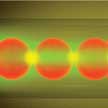 Optical biosensors and micromotors that can sense and actuate biological environments are considered promising theranostic devices because of their high spatial resolution and flexibility.
Advancing the field from synthetic sensors to living materials - which often can be incompatible with biological systems - researchers have assembled living biosensors and micromotors using an in vivo red blood cell (RBC) waveguide for applications in pH sensing and particle transport. This living biosensor can be used for the diagnosis of pH-related disorders of the blood; then, the waveguide can rotate as a micromotor and transport microparticles to the target region.
Optical biosensors and micromotors that can sense and actuate biological environments are considered promising theranostic devices because of their high spatial resolution and flexibility.
Advancing the field from synthetic sensors to living materials - which often can be incompatible with biological systems - researchers have assembled living biosensors and micromotors using an in vivo red blood cell (RBC) waveguide for applications in pH sensing and particle transport. This living biosensor can be used for the diagnosis of pH-related disorders of the blood; then, the waveguide can rotate as a micromotor and transport microparticles to the target region.
Dec 16th, 2019
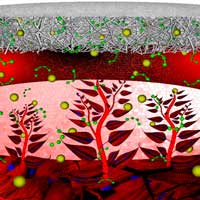 Among the various therapeutic advances, regenerative medicine and nanotechnologies have demonstrated a considerable capacity to salvage or regenerate damaged heart tissue in animal models. The superior characteristics of nanobiomaterials have shown great promise in developing engineered cardiovascular constructs for a variety of tissue engineering applications. But in order to develop efficient nanotechnology-based regenerative medicine platforms in humans, clinicians and engineers must achieve a greater common understanding of the problems, challenges, and opportunities in both fields.
Among the various therapeutic advances, regenerative medicine and nanotechnologies have demonstrated a considerable capacity to salvage or regenerate damaged heart tissue in animal models. The superior characteristics of nanobiomaterials have shown great promise in developing engineered cardiovascular constructs for a variety of tissue engineering applications. But in order to develop efficient nanotechnology-based regenerative medicine platforms in humans, clinicians and engineers must achieve a greater common understanding of the problems, challenges, and opportunities in both fields.
Sep 10th, 2019
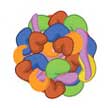 Despite considerable, decade-long efforts in the field of nanomedicine, fewer nanoparticle technologies than expected have made it to clinical trials. Understanding the role of the nano-bio interface - the protein corona - appears to be a critical factor for successful clinical translation of medical nanotechnologies. New research demonstrates that the protein corona controls the interaction of liposomes with immune cells and reveals that the pre-coating of liposomes with an artificial corona made of human plasma proteins significantly decreases capture by circulating leukocytes in whole blood.
Despite considerable, decade-long efforts in the field of nanomedicine, fewer nanoparticle technologies than expected have made it to clinical trials. Understanding the role of the nano-bio interface - the protein corona - appears to be a critical factor for successful clinical translation of medical nanotechnologies. New research demonstrates that the protein corona controls the interaction of liposomes with immune cells and reveals that the pre-coating of liposomes with an artificial corona made of human plasma proteins significantly decreases capture by circulating leukocytes in whole blood.
Aug 21st, 2019
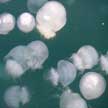 Researchers demonstrate the ease of use of jellyfish biomass as a biodegradable and biocompatible raw material for producing antibacterial mats. They report the successful electrospun-based preparation of novel composite biocompatible nanofibers based on jellyfish biomass. The antibacterial properties of the resulting nanofiber mats were enhanced by incorporating silver nanoparticles within applying an in situ bio-template synthesis that the team developed. This work suggests exploiting the jellyfish as an accessible, cheap and valuable renewable material that can be used in various applications, such as cosmetics, wound dressings, artificial skin, and bioplastics.
Researchers demonstrate the ease of use of jellyfish biomass as a biodegradable and biocompatible raw material for producing antibacterial mats. They report the successful electrospun-based preparation of novel composite biocompatible nanofibers based on jellyfish biomass. The antibacterial properties of the resulting nanofiber mats were enhanced by incorporating silver nanoparticles within applying an in situ bio-template synthesis that the team developed. This work suggests exploiting the jellyfish as an accessible, cheap and valuable renewable material that can be used in various applications, such as cosmetics, wound dressings, artificial skin, and bioplastics.
Jul 30th, 2019
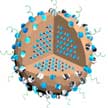 Researchers have for the first time proposed a novel tumor treatment strategy for microwave dynamic therapy to effectively treat cancers. This technique can promote the efficacy of dynamic treatment of deep tumors in clinical research and could have a broad range of applications. The team found that liquid metal supernanoparticles can generate reactive oxygen species (ROS) under microwave irradiation. That makes them suitable as microwave sensitizers for revolutionizing the ROS generation techniques.
Researchers have for the first time proposed a novel tumor treatment strategy for microwave dynamic therapy to effectively treat cancers. This technique can promote the efficacy of dynamic treatment of deep tumors in clinical research and could have a broad range of applications. The team found that liquid metal supernanoparticles can generate reactive oxygen species (ROS) under microwave irradiation. That makes them suitable as microwave sensitizers for revolutionizing the ROS generation techniques.
Jul 25th, 2019
 Proteins present in human plasma mirror a person's physiology and the ability to rapidly profile the plasma proteome holds the promise of a revolution in point-of-care disease diagnosis and therapeutic monitoring. New research findings suggest that levitation patterns of human plasma proteins using a magnetic levitation technique may provide useful information about the health spectrum of individual donors. The study reveals that optical images of magnetically levitated plasma proteins carry important information about the health spectrum of plasma donors.
Proteins present in human plasma mirror a person's physiology and the ability to rapidly profile the plasma proteome holds the promise of a revolution in point-of-care disease diagnosis and therapeutic monitoring. New research findings suggest that levitation patterns of human plasma proteins using a magnetic levitation technique may provide useful information about the health spectrum of individual donors. The study reveals that optical images of magnetically levitated plasma proteins carry important information about the health spectrum of plasma donors.
 Subscribe to our Nanotechnology Spotlight feed
Subscribe to our Nanotechnology Spotlight feed





